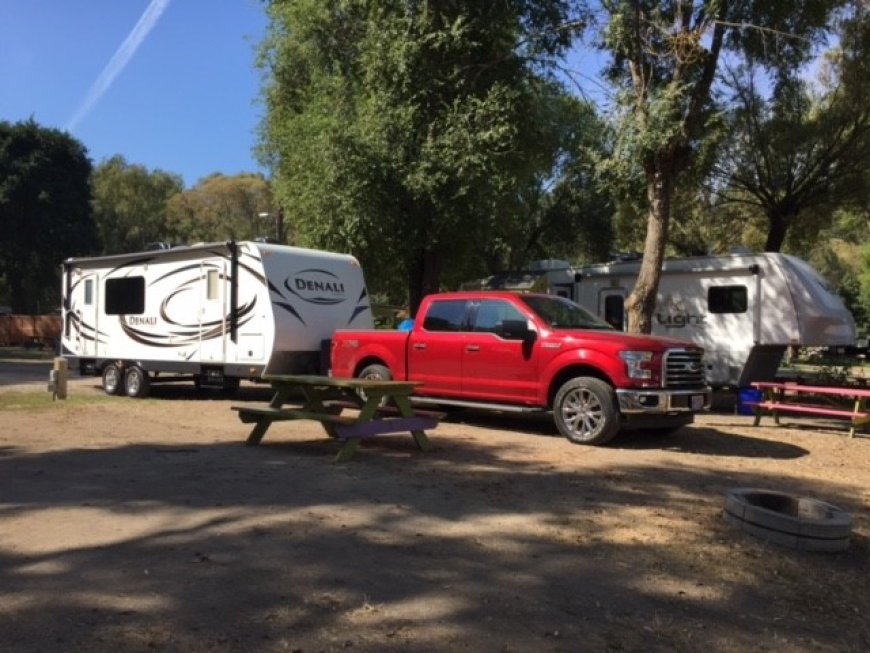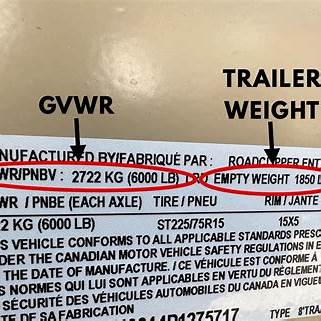RV Safety Tips for a Trouble-Free Trip
Hitting the road in your RV opens the door to unforgettable adventures—but safety must come first. Whether you’re a new RV owner or a seasoned traveller, these pre-trip checks and driving tips will help you stay safe and confident on the road. The post RV Safety Tips for a Trouble-Free Trip appeared first on Camping & RVing BC.

Hitting the road in your RV opens the door to unforgettable adventures—but safety must come first. Whether you’re a new RV owner or a seasoned traveller, these pre-trip checks and driving tips will help you stay safe and confident on the road.
Pre-Trip Checks
Comprehensive Inspection: Have the RV’s brakes, tires and additional systems like tow/haul modes and air brakes inspected before the camping season or any big trip. Refer to your RV’s manual and educate yourself to do so or hire a professional such as a Certified Recreational Vehicle Technician. Preventative maintenance will help to limit breakdowns or accidents.

A general rule is to inspect the brakes every 4,800 kilometers (3,000 miles). Check the tire pressure before each trip and during stops on long journeys. Properly inflated tires improve safety and fuel economy; improper inflation affects handling and braking.
Weight Limits: Familiarize yourself with the RV’s weight limits and avoid overloading the unit. Too much weight can lead to poor handling and tire blowouts. Gross Vehicle Weight (GVW) is the weight of the RV, including passengers, cargo and liquids; Gross Combined Weight (GCW) is the total weight of the tow vehicle and RV combined.

Safety Detectors: Install and maintain smoke detectors and carbon monoxide (CO) detectors to protect against fire and poisoning. Invest in a portable, battery-operated smoke detector if the unit does not come with one. Have at least one smoke alarm near the sleeping area and know the location of the fire extinguisher(s). Verify that the extinguisher’s pressure gauge or indicator is in the operable range or position and lift the extinguisher to ensure it’s full.
If the RV has a generator inspect the exhaust system each time before using it. Don’t use the generator if the exhaust system is damaged or is making any strange noises.
Mirrors and Cameras: Confirm that all mirrors adjust smoothly and ensure that any cameras are functioning to eliminate any blind spots. Keep in mind that the vehicle’s size can affect visibility.

Secure Items: Loose items – both inside and outside of the RV – can become projectiles during sharp turns and sudden stops. Secure everything properly and check that the door locks work on cupboards and the fridge. (There’s a story about a jar of flying pickles here!)
Emergency Preparedness: Keep a charged cell phone, emergency contacts and any roadside assistance membership information within reach.
Driving Tips
Whether you’re towing a travel trailer or driving a Class A motorhome, RVs have different driving techniques and rules compared to cars and trucks. Be aware of your speed and required braking distance and allow plenty of space to maneuver.
‘Off-tracking’ Education: When an RV is steered, especially a larger one such as a motor home, the rear doesn’t follow the exact path of the front wheels. This is called “off-tracking,” and it means that the back end can substantially swing out during turns. It’s therefore important to plan any turns with extra care.
For tight corners and narrow roads, take wide turns by positioning the vehicle so that the rear has enough room to swing.
Practice: Before navigating busy streets or campground roads, practice driving, steering and turning into a controlled environment. Have an adult act as a spotter if you’re getting accustomed to the RV.
Braking: The faster an RV is travelling, the longer it will take to stop and the greater its braking distance. Motor homes often use air brakes, which have a slight delay in engagement compared to hydraulic brakes.
Begin decelerating well in advance of any stop, especially on downhill grades where brakes might overheat. Avoid abrupt steering or hard braking as it can destabilize the vehicle and anything that’s being pulled.
Route Planning: RVs can be tall and wide. Use a mapping tool or RV-specific GPS to check for any height or weight-restricted overpasses or bridges and narrow roads. Knowing your vehicle’s turning radius will help with tight turns.

Environmental Factors: Strong winds and crosswinds can be challenging when driving an RV. Sudden wind gusts can push a vehicle off the road or amplify off-tracking effects during a turn. Adjust your driving speed and turns to the weather conditions to maintain vehicle stability.
Park Smart: Park the RV with enough space around the unit so that the exhaust travels away from the unit. Avoid parking near tall grass or anything that could spark a fire.
Every RV trip is an opportunity to learn. After each adventure, reflect on what — if anything — went wrong or what could be improved on. Note what worked and went smoothly too! With each outing pre-trip checks will become second nature, and you’ll have increased confidence behind the wheel.
TIP: If you find this blog interesting why not subscribe to the enewsletter and never miss another story!
For campgrounds and RV parks in British Columbia go to Camping and RV in British Columbia
Share your BC travel and camping photos using hashtag #CampInBC, #ExploreBC
It’s always a great day to #CampinBC
The post RV Safety Tips for a Trouble-Free Trip appeared first on Camping & RVing BC.
What's Your Reaction?









































